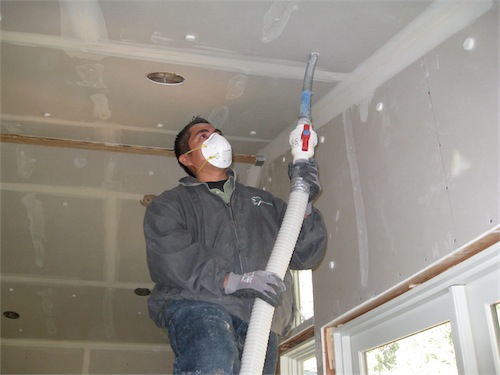A research program in the 1980’s by NASA to keep air fresh in space stations helped discover the role of house plants on indoor air quality. It is well known that plants absorb carbon dioxide and release oxygen through the photosynthesis process. The research showed that many house plants which require low light, also absorb cigarette smoke, benzene, formaldehyde and trichloroethylene, and lower airborne microbial level.
Engineered wood have become popular for building houses and making home furnishings because they are stronger and often cost less than natural materials. Unfortunately many engineered materials require chemicals, notably formaldehye, as binders and often the chemicals are harmful.
Many home products also contain various amounts of chemicals to enhance the manufacturing process and the functionality of the products. Benzene is a very commonly used solvent and is present in many basic items including gasoline, inks, oils, paints, plastics, and rubber. Polybrominated diphenyl ethers (PBDE) is used as fire retardant in furniture. Formaldehyde is used in paint, foam insulation (UFFI), particle board or pressed-wood products, floor covering, carpet backing, and as wrinkle resistors and water repellants. Consumer paper products, including grocery bags, facial tissues, paper towels, and waxed papers, also may contain formaldehyde. Trichloroethylene is used in printing inks, paints, lacquers, varnishes, and adhesives. Since it is hard to avoid having some products with chemicals, it is fortunate that we have plants to help us clear out the harmful pollutants.
Additional work based on the NASA study recommends spreading 15 to 18 houseplants in 6 to 8-inch diameter containers around an average 1,800 square foot house (with not more than 1 plant per 100 square feet). The better the plants grow, the better they can purify the air for you in your home. Exposing the root-soil area can maximize the job of the amazing plants. However, more is not necessarily better. Too many plants may create moisture problems which will require management.
NASA studied a number of house plants in their two-year project and found the following are particularly effectively remove indoor pollutants. All house plants are beneficial to a certain degree. You don’t have to throw away the plants that are not on this list. They still can be attractive decoration in your home.
Further information can be found from the NASA report: Interior Landscape Plants for Indoor Air Pollution Abatement, September 1989.








[…] http://greenremodelforum.com/GRF/blog/?p=130 […]